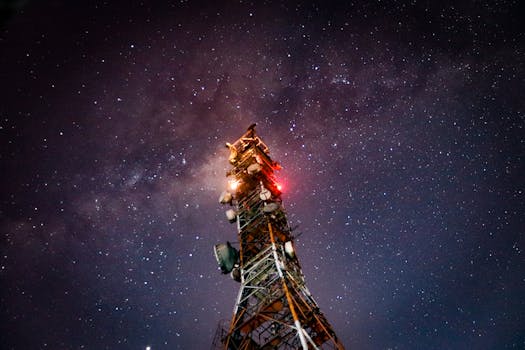
MEO Satellites: Revolutionizing Global Communication with Medium Earth Orbit Technology
MEO satellites, or Medium Earth Orbit satellites, are a type of satellite that operates in an orbit between 2,000 and 36,000 kilometers above the Earth’s surface. This orbit is higher than Low Earth Orbit (LEO) satellites but lower than Geostationary Orbit (GEO) satellites. MEO satellites are designed to provide a range of services, including navigation, communication, and Earth observation.
The use of MEO satellites is becoming increasingly popular due to their ability to offer faster and more reliable connections than traditional GEO satellites. MEO satellites have a lower latency than GEO satellites, which means that they can provide real-time communication services with less delay. This makes them ideal for applications such as video conferencing, online gaming, and remote healthcare.
How MEO Satellites Work
MEO satellites work by transmitting and receiving signals to and from Earth-based stations. They use a range of frequencies, including Ku-band, Ka-band, and L-band, to provide a range of services. MEO satellites are typically equipped with a range of instruments, including antennas, transponders, and propulsion systems.
One of the key benefits of MEO satellites is their ability to provide global coverage. Because they are in a higher orbit than LEO satellites, they can see a larger portion of the Earth’s surface, making them ideal for applications such as navigation and communication. MEO satellites are also less prone to interference from other satellites and terrestrial systems, which makes them more reliable than LEO satellites.
Applications of MEO Satellites
MEO satellites have a range of applications, including navigation, communication, and Earth observation. They are used in a variety of industries, including aviation, maritime, and land transportation. MEO satellites are also used in the provision of broadband services, including internet and television broadcasting.
In addition to their commercial applications, MEO satellites are also used in a range of scientific and research applications. They are used to study the Earth’s climate, weather patterns, and natural resources. MEO satellites are also used in the search for natural resources, such as oil and gas.
Benefits of MEO Satellites
The use of MEO satellites offers a range of benefits, including faster and more reliable connections, global coverage, and lower latency. MEO satellites are also less prone to interference from other satellites and terrestrial systems, which makes them more reliable than LEO satellites.
In addition to their technical benefits, MEO satellites also offer a range of economic benefits. They can provide broadband services to remote and underserved communities, which can help to bridge the digital divide. MEO satellites can also provide a range of services, including navigation and communication, which can help to stimulate economic growth and development.
However, the use of MEO satellites also poses some challenges, including the need for complex and expensive infrastructure, the risk of interference from other satellites and terrestrial systems, and the need for careful planning and management to ensure that the satellites are used effectively and efficiently.
Challenges and Future Developments
Despite the many benefits of MEO satellites, there are also some challenges associated with their use. One of the main challenges is the need for complex and expensive infrastructure, including launch vehicles and ground-based stations. There is also a risk of interference from other satellites and terrestrial systems, which can affect the performance and reliability of MEO satellites.
To overcome these challenges, researchers and developers are working on a range of new technologies and innovations, including advanced propulsion systems, more efficient antennas and transponders, and new materials and designs. There is also a growing interest in the use of MEO satellites for a range of new applications, including the provision of 5G services and the support of IoT devices.
In conclusion, MEO satellites are a type of satellite that operates in an orbit between 2,000 and 36,000 kilometers above the Earth’s surface. They offer a range of benefits, including faster and more reliable connections, global coverage, and lower latency. MEO satellites have a range of applications, including navigation, communication, and Earth observation, and they are used in a variety of industries, including aviation, maritime, and land transportation.
While there are some challenges associated with the use of MEO satellites, including the need for complex and expensive infrastructure and the risk of interference from other satellites and terrestrial systems, researchers and developers are working on a range of new technologies and innovations to overcome these challenges. As the demand for fast and reliable communication services continues to grow, it is likely that MEO satellites will play an increasingly important role in the provision of these services.


